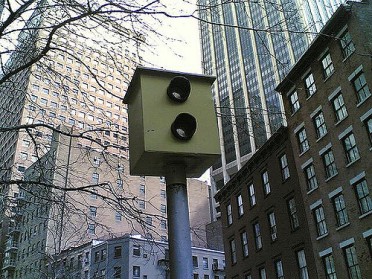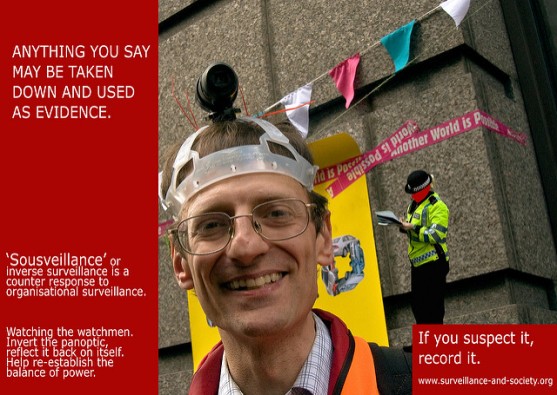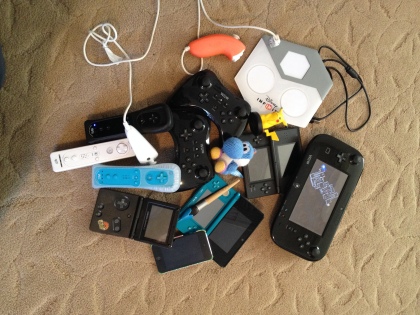Sure I get it. Hacking, spying and cameras watching your every move might leave you thinking that this surveillance obsessed society in which we exist is not benefiting anyone, except for industries who thrive on collecting every minute personal detail. There must be some good in it somewhere. Well consider my argument before you go knocking over a speed camera, giving a CCTV the middle finger or putting another layer of tape over your laptop.

red-light, green-light, 123 by Mark Wilke (CC BY-SA 2.0)
Surveillance can fight crime.
There are many examples where security vision has enabled law breakers and down-right horrible people to be identified and found guilty of crimes. Just this year, police have urged residents with CCTVs in the City of Casey (Melbourne) to join a database which could assist with investigations and subsequent convictions. People power against those who choose to misbehave and cause harm in the community.
Zissou (2013, p. 15) notes that after 600 security cameras were installed across Baltimore in America, the city’s crime rate dropped by nearly 25 per cent. Furthermore, supporters of video surveillance confirm that officials are not interested in watching us shopping or walking our dogs, it’s only those conducting criminal activities who should be worried.
Surveillance can provide security.
Lyon (2013, pp. 4-5) argues that surveillance systems make sure we get paid correctly, that terrorism and drug-trafficking are contained and that we can pay our way through an ordinary day without requiring a pocket full of cash. Who wants to visit the bank every time we run out of cereal, milk, toothpaste, toilet paper, petrol … you get the idea.
Even when the plastic we use instead of money is compromised, surveillance can be there to assist. I have had phone calls from my bank in the past notifying me of suspicious overseas purchases on my credit cards. If it wasn’t for the vigilance of surveillance and its rapid response, then I could have been in for a big shock and a world of financial pain.
What about home security systems? It’s home surveillance. It’s a system. It also provides security.
‘Most people in modern societies regard these accomplishments as contributing positively to the quality of life’ (Lyon 2013, p. 5).
Surveillance can entertain.
Have you ever accessed web cams from around the world that are situated in famous locations? I often catch myself sitting at the laptop observing the rush of people, countless yellow cabs and the mesmerising neon display of Times Square in New York. These cameras allow me to reflect on some fantastic memories of my time in that amazing city. Guess what? They are cameras watching people go about their busy day in a busy city, oblivious to the fact that little ol’ me is back in Australia watching what they are up to 16,000 kilometres away. Yes it’s a form of surveillance but it doesn’t appear to be doing anything evil does it? Except make me jealous of those tourists.
I’m jealous of myself when I see this photo!

Taken by Joe Bovalino, 11 December 2013
In a weird way we need to monitor the monitors. Surveillance should be regulated and be used wisely; however it’s not all bad. It can help in crime prevention, gives us a sense of security and it can entertain us, perhaps even make us laugh. As long as it’s not me being caught doing something embarrassing!
(526 WORDS)
REFERENCES:
Lyon, D 2013, The Electronic Eye: The Rise of Surveillance Society – Computers and Social Control in Context, Wiley: Hoboken, EBSCOhost, viewed 24 August 2016.
Zissou, R 2013, ‘Eye spy: should governments install surveillance cameras in public places?’, Junior Scholastic/Current Events, 19, EBSCOhost, viewed 29 August 2016.





















